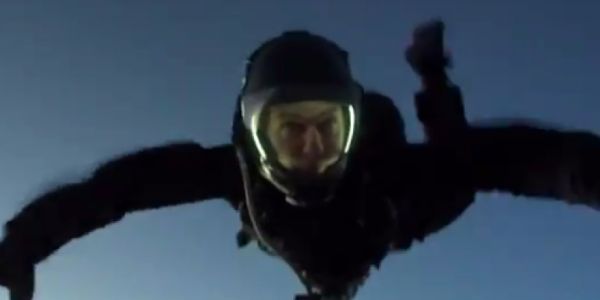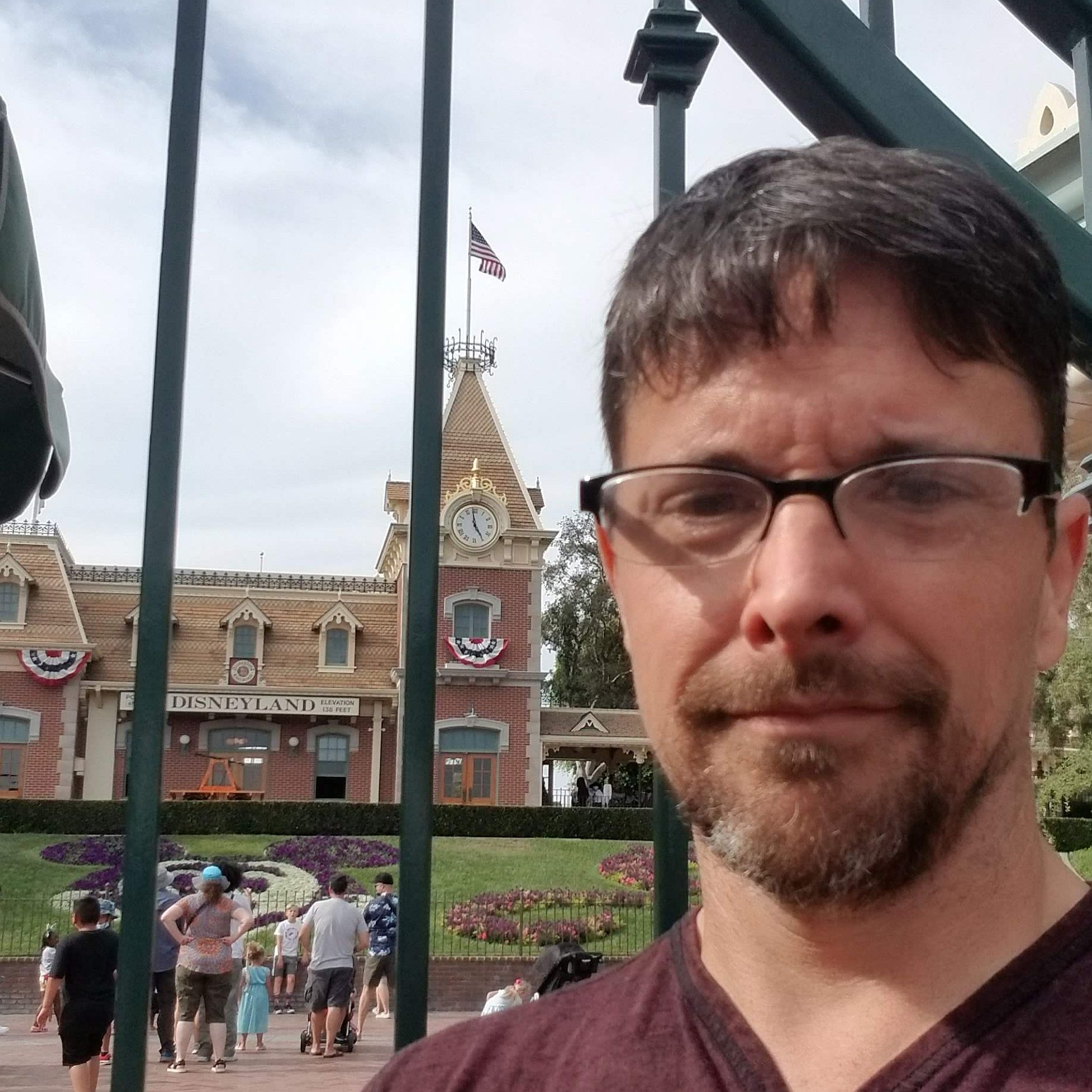Filming The Mission: Impossible - Fallout HALO Jump Was More Insane Than You Think

A lot of the discussion when Mission: Impossible - Fallout hit theaters was about Tom Cruise skydiving stunts, but it turns out the jump was an even bigger stunt then we were led to believe. The high altitude, low open jump was already a major event simply because Tom Cruise, an actor, was the one doing it, but a behind-the-scenes feature on the jump on the new Blu-ray for Mission: Impossible - Fallout reveals that the jump seen on screen is actually three jumps, and they required the invention of entirely new equipment just to make it work.
It turns out that it actually took over 100 skydiving jumps to get the final scene that we get in the movie. This is because Tom Cruise first had to qualify at a number of different altitudes. Then, numerous jumps were done at lower altitudes as part of the rehearsal process, as everybody, Tom Cruise, the cameraman, the safety personnel that jumped with him, and the stunt diver that handled Henry Cavill's part of the scene, all learned what they were going to need to do in order to make the actual HALO jump work on film.
Where things really start to get interesting, however, is where the production has to figure out how to both produce a safe high altitude jump and also shoot a scene that's going to work for a blockbuster action movie. Because of the altitude, Tom Cruise needed to be breathing from an oxygen tank, which meant the helmet that he wore wasn't there simply for show as it was actually providing his air. However, this helmet had some special features that needed to be there for filming, though those features provided their own problems, according to director Christopher McQuarrie...
We had to develop a special helmet. It's a nighttime sequence which means we have to find a way to light Tom's face. Any sort of spark from the lights, it's going to set Tom on fire. We essentially designed what is both a prop and a life-saving device.
According to Tom Cruise, the helmet had to be certified by the Royal Air Force in order to be sure it would function properly under the extreme conditions, so while it was partially designed as a movie prop, as McQuarrie states, it is a functional life-saving device as well.
Before Mission: Impossible hit theaters, it was revealed how precise the filming of the sequence had to be. Since it's a nighttime scene, the light has to be just right. Since it needed to be filmed as close to sundown as possible, only one chance per day existed to get the shot they needed, since the sun would be long gone before such an undertaking could be reset.
What made this all the more complicated was that in order to film the jump the way that Christopher McQuarrie and Tom Cruise wanted to, they'd actually have to make the jump three times. According to McQuarrie...
Part one, is Tom jumping out of the aircraft and falling into a closeup. We're talking about Tom jumping out of a plane that's traveling at 165 milers an hour. He's falling at 200 miles an hour. Everything that Tom is doing, a camera operator is doing backwards. The biggest challenge of part one was focus. It's an incredibly complicated shot.
Tom Cruise had to get down to a distance of three feet from the cameraman, which was quite difficult in itself falling through the sky, but then the camera operator has to keep Cruise's entire fall in focus properly or none of it actually mattered. On the plus side, they had a camera operator who is used to skydiving with a camera, though, like Tom Cruise, he had never done anything quite like this before.
Your Daily Blend of Entertainment News
The second jump in the sequence is the portion where Henry Cavil's character Walker loses consciousness and Ethan Hunt has to track him down in the sky. The major risk here, which is probably obvious, is that of a collision between the two. If the performers had hit their heads they could damage their helmets and/or actually lose consciousness. When Hunt and Walker connect, the second jump is over.
The third jump sequence opens with Ethan Hunt giving oxygen to Walker. This meant the film crew had to create an oxygen tank that could be removed and transferred from one person to another since that's not generally how such things are designed. In order to allow the tank to connect to the other skydiver while falling at 200 miles per hour, the crew had to use incredibly powerful magnets. Actually connecting the tank was dangerous as getting a finger caught between the magnets could break your finger.
This last jump was actually the final shot of the entire movie, the featurette actually shows Tom Cruise, Christopher McQuarrie and many other members of the crew together watching the playback in order to see whether or not they actually got the shot that they needed to call it a wrap.
It's more than a little remarkable just how much work went into this one sequence that takes up barely two minutes of screen time. From a minimum of three high altitude jumps (it's unclear just how many were actually required to get the three takes they needed) to the designing of never before used, completely functional, skydiving equipment, oh, and I forgot to mention the massive wind tunnel the production built at the beginning of all this just for rehearsal purposes, it's absolutely insane that this was all done simply so this sequence could be done practically rather than via the use of digital effects.
Of course, practical stunts is what Tom Cruise, and the Mission: Impossible franchise, are all about. Whether it's climbing sheer buildings or jumping out of airplanes at 25,000 feet, Tom Cruise is going to do it if it means creating a more realistic movie experience. How Tom Cruise will top this in the next Mission: Impossible movie, that we have to assume is coming, is anybody's guess.
Mission: Impossible - Fallout is now available on Digital and Blu-ray.

CinemaBlend’s resident theme park junkie and amateur Disney historian, Dirk began writing for CinemaBlend as a freelancer in 2015 before joining the site full-time in 2018. He has previously held positions as a Staff Writer and Games Editor, but has more recently transformed his true passion into his job as the head of the site's Theme Park section. He has previously done freelance work for various gaming and technology sites. Prior to starting his second career as a writer he worked for 12 years in sales for various companies within the consumer electronics industry. He has a degree in political science from the University of California, Davis. Is an armchair Imagineer, Epcot Stan, Future Club 33 Member.
